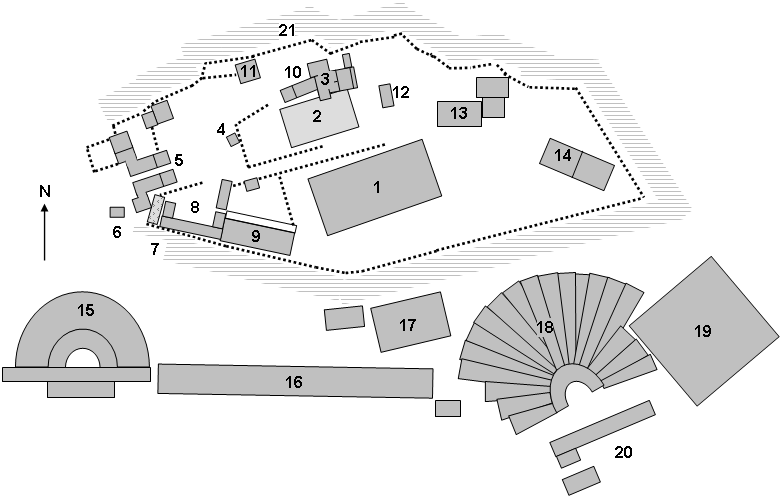|
Altar Of Athena Polias
The Altar of Athena Polias was a former structure on the Acropolis of Athens dedicated to the goddess Athena. The altar's foundations were laid in 525 B.C. by the sons of the Athenian dictator Peisistratus, but may have overlaid an earlier temple constructed between 599 and 550. The altar itself stood within a narrow temple atop a marble pediment depicting battles between gods and giants. Images of Athena are shown as dominant and victorious within the armies of the gods.Buckley 2010, p. 2010 References Acropolis of Athens {{Greece-struct-stub ... [...More Info...] [...Related Items...] OR: [Wikipedia] [Google] [Baidu] |
Acropolis Of Athens
The Acropolis of Athens is an ancient citadel located on a rocky outcrop above the city of Athens and contains the remains of several ancient buildings of great architectural and historical significance, the most famous being the Parthenon. The word ''acropolis'' is from the Greek words (''akron'', "highest point, extremity") and (''polis'', "city"). The term acropolis is generic and there are many other acropoleis in Greece. During ancient times the Acropolis of Athens was known also more properly as Cecropia, after the legendary serpent-man, Cecrops, the supposed first Athenian king. While there is evidence that the hill was inhabited as far back as the fourth millennium BC, it was Pericles (c. 495–429 BC) in the fifth century BC who coordinated the construction of the buildings whose present remains are the site's most important ones, including the Parthenon, the Propylaea, the Erechtheion and the Temple of Athena Nike. The Parthenon and the other buildings were seri ... [...More Info...] [...Related Items...] OR: [Wikipedia] [Google] [Baidu] |
Athena
Athena or Athene, often given the epithet Pallas, is an ancient Greek religion, ancient Greek goddess associated with wisdom, warfare, and handicraft who was later syncretism, syncretized with the Roman goddess Minerva. Athena was regarded as the patron and protectress of various cities across Greece, particularly the city of Athens, from which she most likely received her name. The Parthenon on the Acropolis of Athens is dedicated to her. Her major symbols include Owl of Athena, owls, olive trees, snakes, and the Gorgoneion. In art, she is generally depicted wearing a helmet and holding a spear. From her origin as an Aegean tutelary deity, palace goddess, Athena was closely associated with the city. She was known as ''Polias'' and ''Poliouchos'' (both derived from ''polis'', meaning "city-state"), and her temples were usually located atop the fortified acropolis in the central part of the city. The Parthenon on the Athenian Acropolis is dedicated to her, along with numerous ... [...More Info...] [...Related Items...] OR: [Wikipedia] [Google] [Baidu] |
Peisistratus
Pisistratus or Peisistratus ( grc-gre, Πεισίστρατος ; 600 – 527 BC) was a politician in ancient Athens, ruling as tyrant in the late 560s, the early 550s and from 546 BC until his death. His unification of Attica, the triangular peninsula of Greece containing Athens, along with economic and cultural improvements laid the groundwork for the later preeminence of Athens in ancient Greece. His legacy lies primarily in his institution of the Panathenaic Games, historically assigned the date of 566 BC, and the consequent first attempt at producing a definitive version of the Homeric epics. Peisistratos' championing of the lower class of Athens is an early example of populism. While in power, he did not hesitate to confront the aristocracy and greatly reduce their privileges, confiscating their lands and giving them to the poor. Peisistratos funded many religious and artistic programs, in order to improve the economy and spread the wealth more equally among the Athenian p ... [...More Info...] [...Related Items...] OR: [Wikipedia] [Google] [Baidu] |


